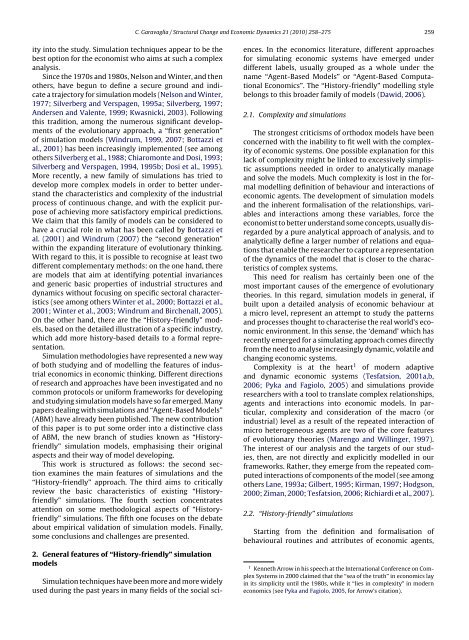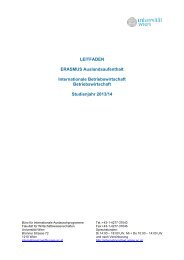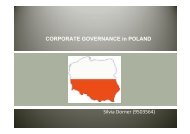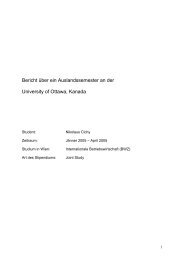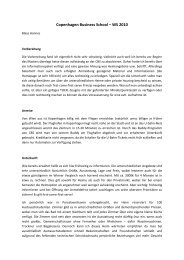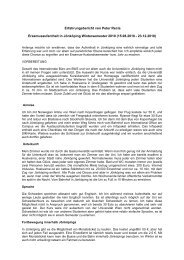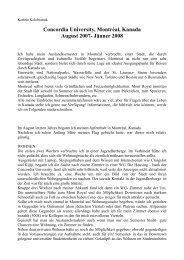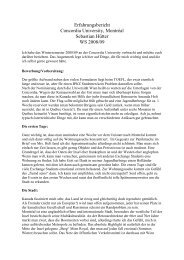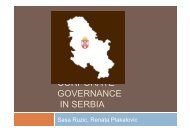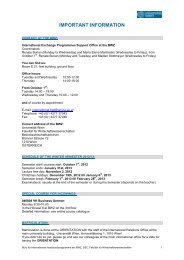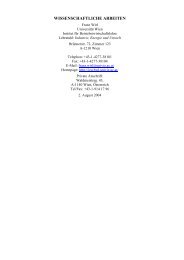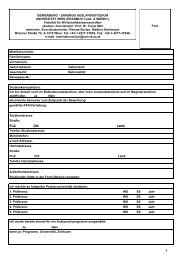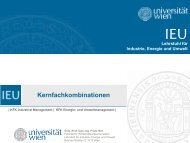Modelling industrial dynamics with "History-friendly" simulations
Modelling industrial dynamics with "History-friendly" simulations
Modelling industrial dynamics with "History-friendly" simulations
You also want an ePaper? Increase the reach of your titles
YUMPU automatically turns print PDFs into web optimized ePapers that Google loves.
ity into the study. Simulation techniques appear to be the<br />
best option for the economist who aims at such a complex<br />
analysis.<br />
Since the 1970s and 1980s, Nelson and Winter, and then<br />
others, have begun to define a secure ground and indicate<br />
a trajectory for simulation models (Nelson and Winter,<br />
1977; Silverberg and Verspagen, 1995a; Silverberg, 1997;<br />
Andersen and Valente, 1999; Kwasnicki, 2003). Following<br />
this tradition, among the numerous significant developments<br />
of the evolutionary approach, a “first generation”<br />
of simulation models (Windrum, 1999, 2007; Bottazzi et<br />
al., 2001) has been increasingly implemented (see among<br />
others Silverberg et al., 1988; Chiaromonte and Dosi, 1993;<br />
Silverberg and Verspagen, 1994, 1995b; Dosi et al., 1995).<br />
More recently, a new family of <strong>simulations</strong> has tried to<br />
develop more complex models in order to better understand<br />
the characteristics and complexity of the <strong>industrial</strong><br />
process of continuous change, and <strong>with</strong> the explicit purpose<br />
of achieving more satisfactory empirical predictions.<br />
We claim that this family of models can be considered to<br />
have a crucial role in what has been called by Bottazzi et<br />
al. (2001) and Windrum (2007) the “second generation”<br />
<strong>with</strong>in the expanding literature of evolutionary thinking.<br />
With regard to this, it is possible to recognise at least two<br />
different complementary methods: on the one hand, there<br />
are models that aim at identifying potential invariances<br />
and generic basic properties of <strong>industrial</strong> structures and<br />
<strong>dynamics</strong> <strong>with</strong>out focusing on specific sectoral characteristics<br />
(see among others Winter et al., 2000; Bottazzi et al.,<br />
2001; Winter et al., 2003; Windrum and Birchenall, 2005).<br />
On the other hand, there are the “<strong>History</strong>-friendly” models,<br />
based on the detailed illustration of a specific industry,<br />
which add more history-based details to a formal representation.<br />
Simulation methodologies have represented a new way<br />
of both studying and of modelling the features of <strong>industrial</strong><br />
economics in economic thinking. Different directions<br />
of research and approaches have been investigated and no<br />
common protocols or uniform frameworks for developing<br />
and studying simulation models have so far emerged. Many<br />
papers dealing <strong>with</strong> <strong>simulations</strong> and “Agent-Based Models”<br />
(ABM) have already been published. The new contribution<br />
of this paper is to put some order into a distinctive class<br />
of ABM, the new branch of studies known as “<strong>History</strong>friendly”<br />
simulation models, emphasising their original<br />
aspects and their way of model developing.<br />
This work is structured as follows: the second section<br />
examines the main features of <strong>simulations</strong> and the<br />
“<strong>History</strong>-friendly” approach. The third aims to critically<br />
review the basic characteristics of existing “<strong>History</strong>friendly”<br />
<strong>simulations</strong>. The fourth section concentrates<br />
attention on some methodological aspects of “<strong>History</strong>friendly”<br />
<strong>simulations</strong>. The fifth one focuses on the debate<br />
about empirical validation of simulation models. Finally,<br />
some conclusions and challenges are presented.<br />
2. General features of “<strong>History</strong>-friendly” simulation<br />
models<br />
Simulation techniques have been more and more widely<br />
used during the past years in many fields of the social sci-<br />
C. Garavaglia / Structural Change and Economic Dynamics 21 (2010) 258–275 259<br />
ences. In the economics literature, different approaches<br />
for simulating economic systems have emerged under<br />
different labels, usually grouped as a whole under the<br />
name “Agent-Based Models” or “Agent-Based Computational<br />
Economics”. The “<strong>History</strong>-friendly” modelling style<br />
belongs to this broader family of models (Dawid, 2006).<br />
2.1. Complexity and <strong>simulations</strong><br />
The strongest criticisms of orthodox models have been<br />
concerned <strong>with</strong> the inability to fit well <strong>with</strong> the complexity<br />
of economic systems. One possible explanation for this<br />
lack of complexity might be linked to excessively simplistic<br />
assumptions needed in order to analytically manage<br />
and solve the models. Much complexity is lost in the formal<br />
modelling definition of behaviour and interactions of<br />
economic agents. The development of simulation models<br />
and the inherent formalisation of the relationships, variables<br />
and interactions among these variables, force the<br />
economist to better understand some concepts, usually disregarded<br />
by a pure analytical approach of analysis, and to<br />
analytically define a larger number of relations and equations<br />
that enable the researcher to capture a representation<br />
of the <strong>dynamics</strong> of the model that is closer to the characteristics<br />
of complex systems.<br />
This need for realism has certainly been one of the<br />
most important causes of the emergence of evolutionary<br />
theories. In this regard, simulation models in general, if<br />
built upon a detailed analysis of economic behaviour at<br />
a micro level, represent an attempt to study the patterns<br />
and processes thought to characterise the real world’s economic<br />
environment. In this sense, the ‘demand’ which has<br />
recently emerged for a simulating approach comes directly<br />
from the need to analyse increasingly dynamic, volatile and<br />
changing economic systems.<br />
Complexity is at the heart 1 of modern adaptive<br />
and dynamic economic systems (Tesfatsion, 2001a,b,<br />
2006; Pyka and Fagiolo, 2005) and <strong>simulations</strong> provide<br />
researchers <strong>with</strong> a tool to translate complex relationships,<br />
agents and interactions into economic models. In particular,<br />
complexity and consideration of the macro (or<br />
<strong>industrial</strong>) level as a result of the repeated interaction of<br />
micro heterogeneous agents are two of the core features<br />
of evolutionary theories (Marengo and Willinger, 1997).<br />
The interest of our analysis and the targets of our studies,<br />
then, are not directly and explicitly modelled in our<br />
frameworks. Rather, they emerge from the repeated computed<br />
interactions of components of the model (see among<br />
others Lane, 1993a; Gilbert, 1995; Kirman, 1997; Hodgson,<br />
2000; Ziman, 2000; Tesfatsion, 2006; Richiardi et al., 2007).<br />
2.2. “<strong>History</strong>-friendly” <strong>simulations</strong><br />
Starting from the definition and formalisation of<br />
behavioural routines and attributes of economic agents,<br />
1 Kenneth Arrow in his speech at the International Conference on Complex<br />
Systems in 2000 claimed that the “sea of the truth” in economics lay<br />
in its simplicity until the 1980s, while it “lies in complexity” in modern<br />
economics (see Pyka and Fagiolo, 2005, for Arrow’s citation).


